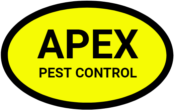General applications are effective at knocking down or even knocking out most insect populations. However, many insect species require specific strategies to effectively eliminate. For this reason, proper identification of the target insect is a must. Once the target insect has been identified, Apex Pest Control is fully equipped to implement the correct procedures to eliminate the target insect. Some examples of insects requiring unique control measures are as follows:
Carpenter Ants do not eat wood. They construct their colonies by excavating tunnels and chambers known as galleries out of wood. Carpenter ants prefer softer, water damaged wood and are typically found within structures around areas of the bathroom or kitchen where leakage has occurred. They can also be found in other areas of water damage such as roofs or sill plates. Carpenter ants can pose an extra challenge to pest control professionals as unlike other ant species, they are not as susceptible to baiting formulations. This makes it more important to pinpoint the location of carpenter ant colonies.
Cockroaches, specifically the German cockroach, provides a number of tricks and traits for the pest control professional to overcome. The most trying is that cockroaches are known to develop resistance and aversion to pesticides. This makes any attempt to eliminate a roach infestation through the use of pesticides only an exercise in futility. The use of baiting products is usually a necessary step in eliminating a roach infestation. This comes with its own challenges as many roaches don’t forage for food very far from their nesting harborage. The pest control professional may have to use monitoring traps to determine the best locations for bait placement. There is also the problem of competition from other food sources. This is where the cooperation of the customer is of the utmost importance. The cleaner the better. If roaches have little in accessible food sources other than the placed bait, results are usually very good. If roaches have a cornucopia of additional food sources available in an unclean environment? Then not so much.
Box Elder Bugs and Asian Beetles flock to homes in the fall with the intention of moving in for the winter. These insects along with others such as cluster flies and stink bugs hibernate within the walls of structures. It is best to have the exterior of your property treated as soon as you see these insects congregating along your exterior. Once they have entered, there is little recourse. It is common for hibernating insects to be roused from their slumber too early by the warmth of the building. These early risers end up inside the home providing a mid-winter irritation. Though annoying, they are completely harmless and will typically die within a few days.
